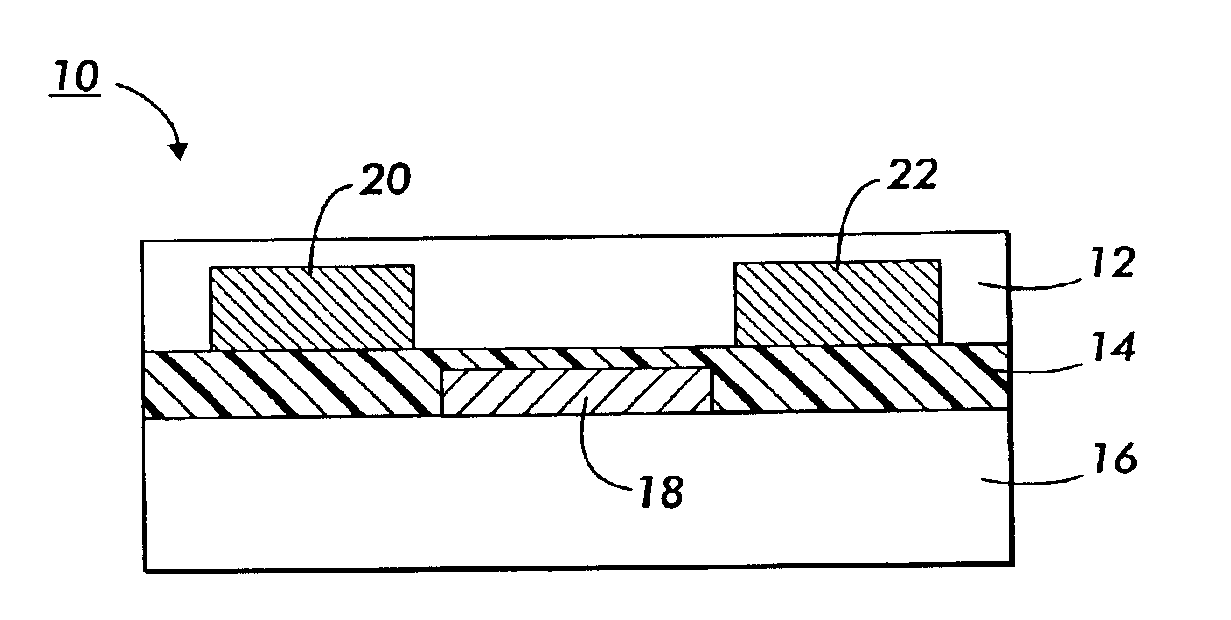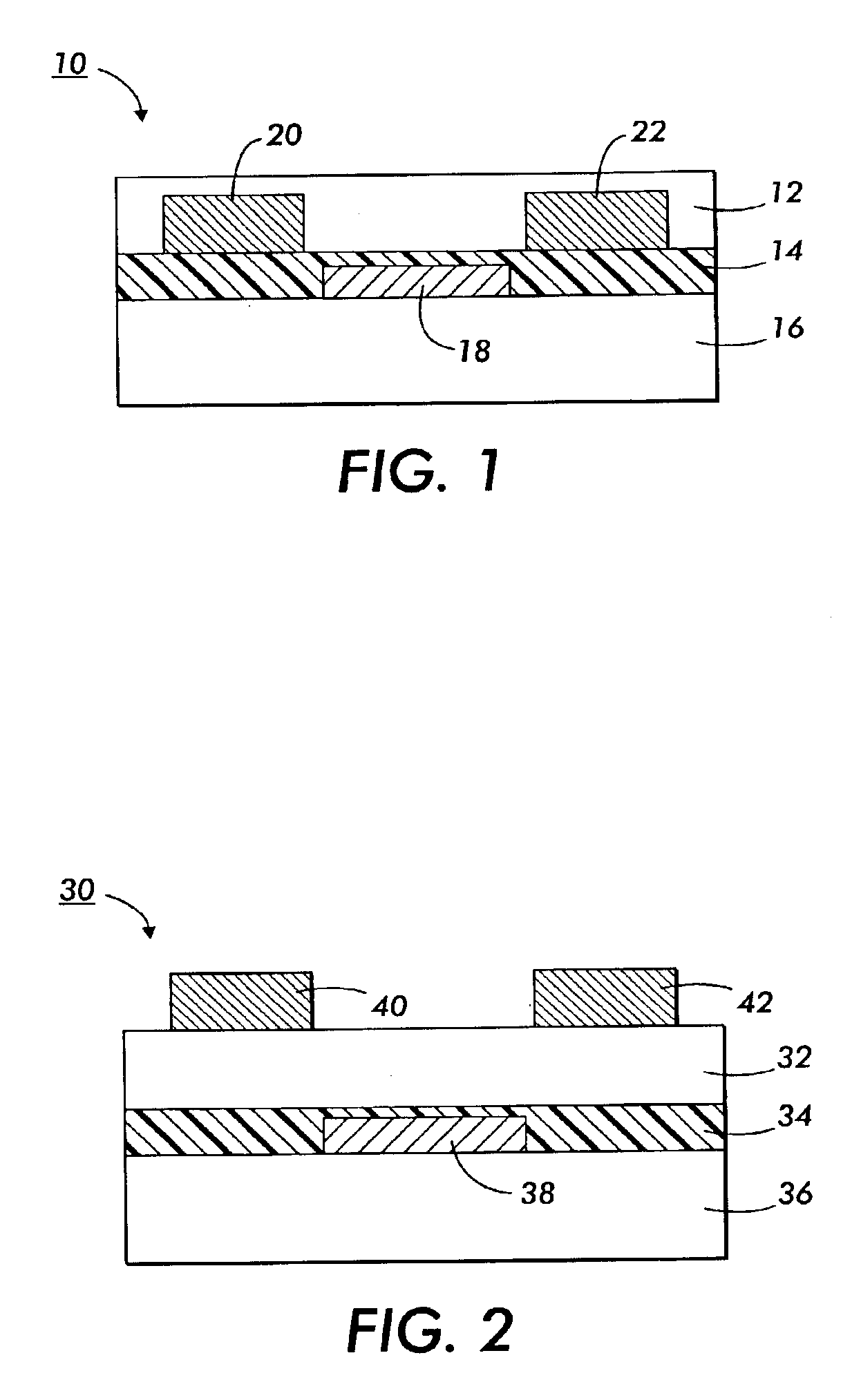Fluorinated polythiophenes and devices thereof
a technology of fluorinated polythiophene and fluorinated polythiophene, which is applied in the field of polythiophene, can solve the problems of increased conductivity, increased conductivity, and reduced device performance, and achieves the effect of enhancing device performance and reducing manufacturing costs
- Summary
- Abstract
- Description
- Claims
- Application Information
AI Technical Summary
Benefits of technology
Problems solved by technology
Method used
Image
Examples
example i
Preparation of Polythiophene (1, a=0.75; b=0.25)
i) Monomers
2,5-Dibromo-3-hexylthiophene was prepared by adding 35.60 (0.20 mol) of powdered N-bromosuccinimide to 16.83 grams (0.10 mol) of 3-hexylthiophene in 135 milliliters of 1:1 mixture of dichloromethane and acetic acid at room temperature over a period of 30 minutes. The mixture was then stirred for about 4 hours at room temperature and the progress of the reaction was monitored by TLC. After the reaction, the reaction mixture was diluted with 100 milliliters of dichloromethane and transferred to separatory funnel. The organic phase was separated and washed three times with water, two times with a 10 percent aqueous sodium bicarbonate solution, 2 times with a 5 percent aqueous sodium thiosulfate solution, and then three times with water again. The organic layer was separated and dried with magnesium sulfate, and the solvent removed by vacuum evaporation. Pure, about 99.5 percent, 2,5-dibromo-3-hexylthiophene was obtained by dist...
PUM
| Property | Measurement | Unit |
|---|---|---|
| mole fractions | aaaaa | aaaaa |
| conductive | aaaaa | aaaaa |
| stability | aaaaa | aaaaa |
Abstract
Description
Claims
Application Information
 Login to View More
Login to View More - R&D
- Intellectual Property
- Life Sciences
- Materials
- Tech Scout
- Unparalleled Data Quality
- Higher Quality Content
- 60% Fewer Hallucinations
Browse by: Latest US Patents, China's latest patents, Technical Efficacy Thesaurus, Application Domain, Technology Topic, Popular Technical Reports.
© 2025 PatSnap. All rights reserved.Legal|Privacy policy|Modern Slavery Act Transparency Statement|Sitemap|About US| Contact US: help@patsnap.com



